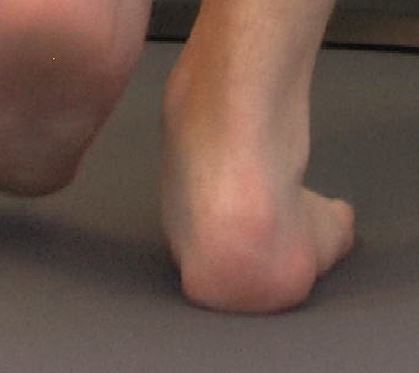The ‘too many toes‘ sign is when there are more than a few toes showing up laterally when standing and looking from behind. This generally means that the foot is more abducted or the forefoot is abducted on the rearfoot.
The “Too many toes” sign, also known as the “Abductory twist” or “Abductory sign,” is a clinical observation made during gait analysis. It refers to the appearance of an additional visible toe or toes on the outside edge of the foot during the stance phase of walking or running.
Normally, during the stance phase of gait, the foot should maintain a straight or slightly inward alignment. However, in individuals with certain biomechanical abnormalities or gait issues, an apparent outward deviation of the foot occurs just as the heel lifts off the ground. This results in the appearance of the lateral toes moving outward, hence the term “Too many toes” sign.
The “Too many toes” sign is typically associated with excessive rearfoot motion, particularly excessive pronation. Pronation refers to the natural inward rolling of the foot as the arch flattens during the gait cycle. However, excessive or prolonged pronation can lead to various foot and lower limb issues, including the “Too many toes” sign.
The appearance of the “Too many toes” sign may indicate underlying problems such as:
- Overpronation: Excessive inward rolling of the foot, which can affect the alignment of the foot and lower limb during walking or running.
- Forefoot abduction: The front part of the foot (forefoot) drifts outward, leading to a widening of the stance and the appearance of more toes.
- Abnormal foot mechanics: Structural abnormalities in the foot, such as flat feet or high arches, can contribute to abnormal foot motions and increase the likelihood of observing the “Too many toes” sign.
The “Too many toes” sign alone is not sufficient for diagnosing a specific condition. It is a clinical observation that requires comprehensive evaluation, including a thorough assessment of gait, foot structure, range of motion, and any associated symptoms or complaints.

